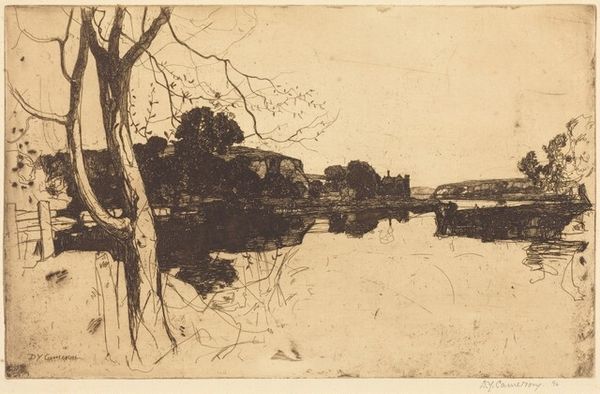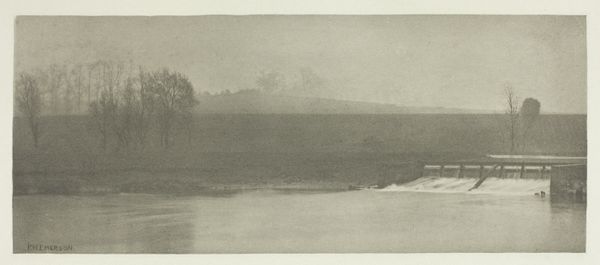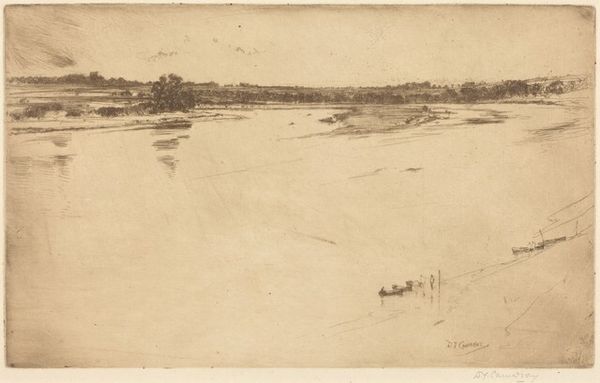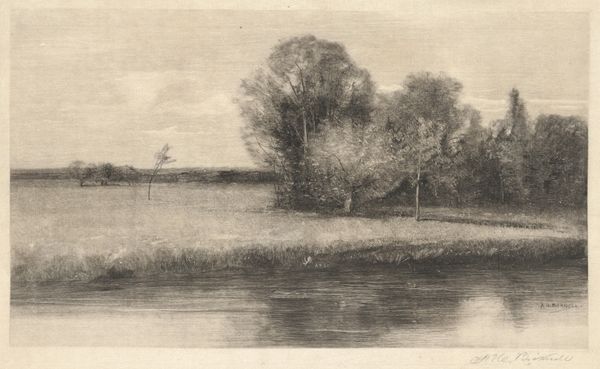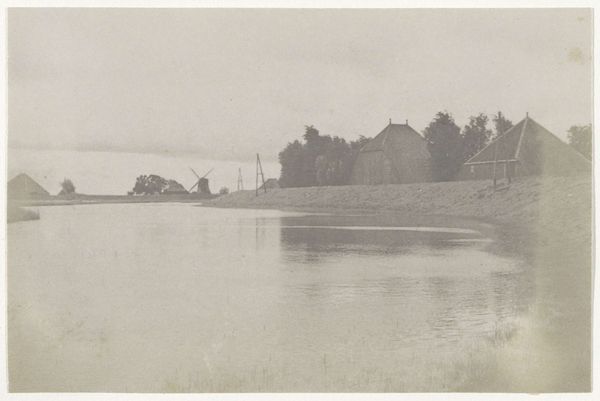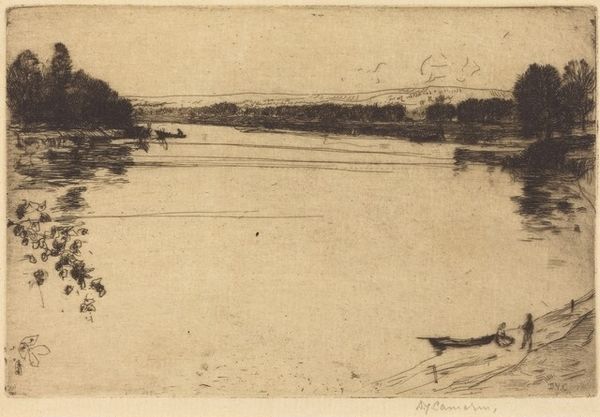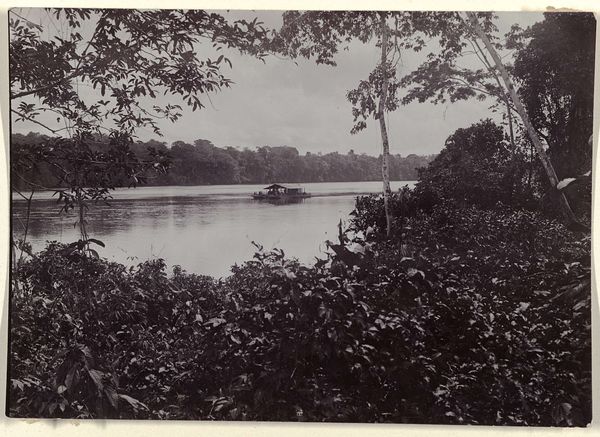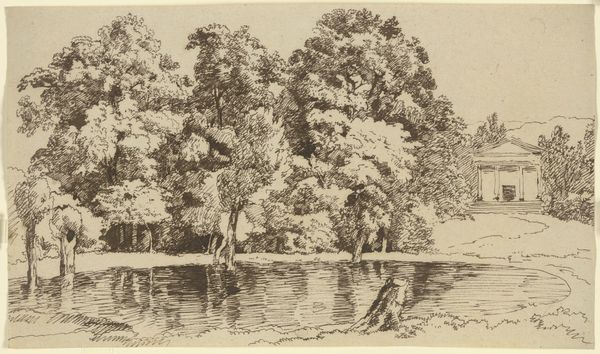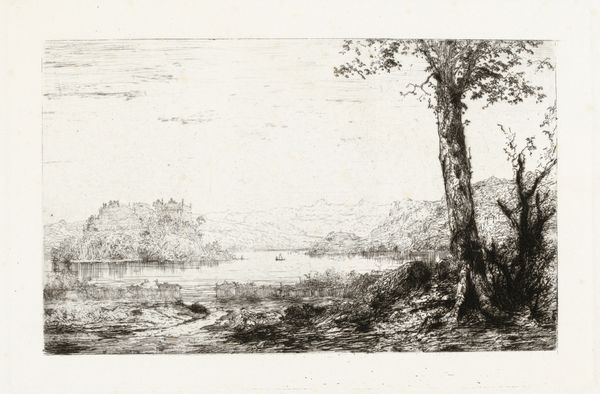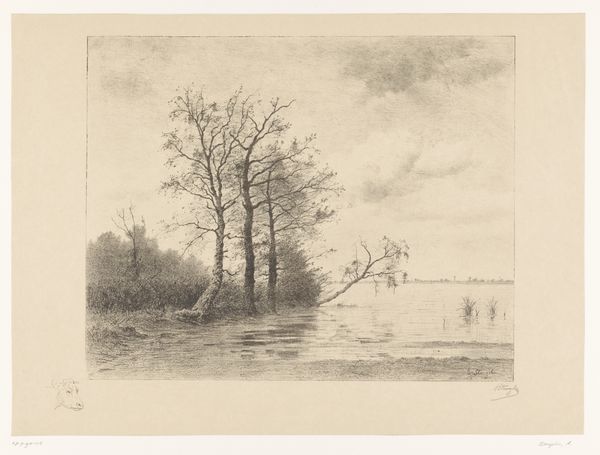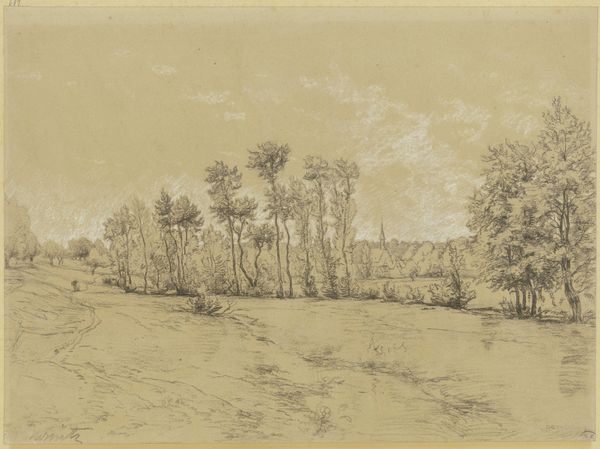
print, etching
# print
#
etching
#
landscape
#
glasgow-school
#
geometric
#
line
#
modernism
Copyright: National Gallery of Art: CC0 1.0
Editor: This is David Young Cameron's etching, "The Tay," from 1912. There's a real sense of stillness, almost melancholy, to the landscape. What do you see in this piece? Curator: The quiet mood you've picked up on connects deeply to the social context of its time. This work emerges from the Glasgow School, an era grappling with industrialization and urbanization. Cameron uses landscape, in its purest form, to offer an escape from this reality. Does this escape serve only an elite audience or can the "common person" relate? Editor: Interesting. I hadn't thought about it as a form of social commentary. I suppose that its appeal depends on how one relates to art. Did the Glasgow School aim for a universal appeal or appeal to a more select segment of society? Curator: The Glasgow School navigated a fine line. On one hand, its members sought recognition within established art institutions and appealed to collectors, thereby entering elite social circles. Yet, there was also a strong impulse toward accessibility through printmaking. Etchings, like this one, allowed for wider distribution than paintings. The play with light and shadow is striking here. The almost photographic attention to detail speaks to a fascination with realism alongside the desire for social reflection. The scene depicts nature with subtle signs of industrialization on the horizon - that’s on the far river edge. How does that influence your understanding of its commentary now? Editor: Knowing that there’s a tension between nature and encroaching industry gives the stillness an uneasy quality. So, its message isn't simply escapism but also perhaps a lament. Curator: Precisely! Seeing art as a reflection of and commentary on society definitely deepens the meaning for me. Editor: I’ll definitely be looking closer at the social context behind artworks from now on.
Comments
No comments
Be the first to comment and join the conversation on the ultimate creative platform.

